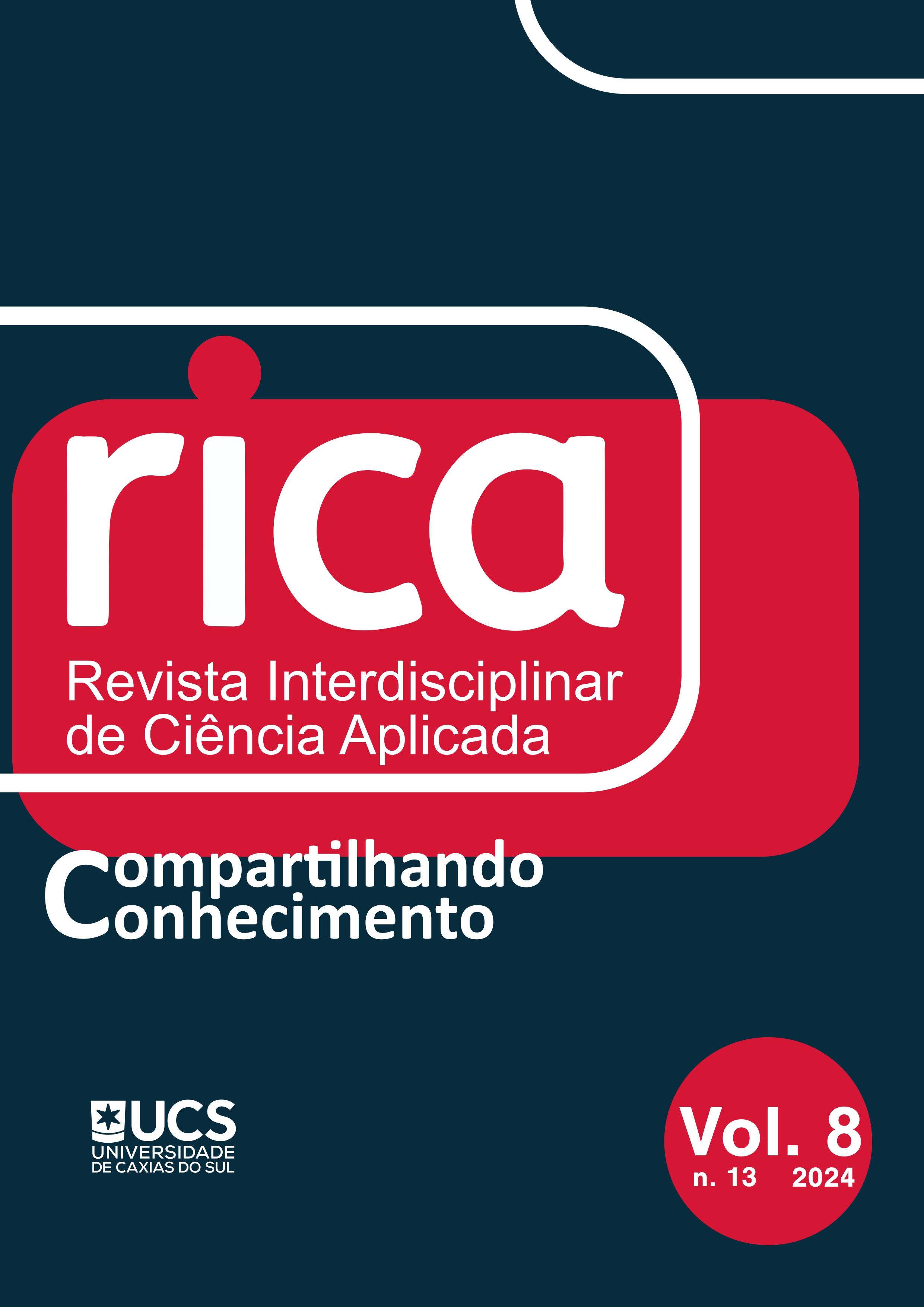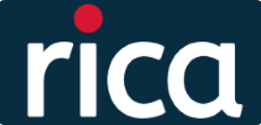Sistemas de tratamento de efluentes de vinícola: tendências e desafios
DOI:
https://doi.org/10.18226/25253824.v8.n13.16Palabras clave:
Efluente industrial, Tratamentos biológicos, Wetlands construídos, Processos oxidativos avançados, Células microbianas de combustívelResumen
A produção de vinho é uma prática milenar com fortes aspectos culturais e econômicos. Entretanto, vinícolas descartam 0,2 a 14 litros de efluentes por litro de vinho produzido e as crescentes pressões ambientais requerem o uso de tecnologias cada vez mais eficientes para seus tratamentos. O presente trabalho apresenta uma revisão sistemática de literatura para identificar os desafios e tendências nos sistemas de tratamento de efluentes de vinícola. A revisão analisou 122 estudos publicados entre 2013 e 2022. Tratamentos biológicos são os mais investigados e apresentam remoções médias de 85% de demanda química de oxigênio (DQO). Entretanto, esses sistemas apresentam dificuldades na remoção de cor, polifenóis e nutrientes. Pesquisas exitosas buscam superar esse desafio com a adição de algas e fungos nos reatores. Os tratamentos físico-químicos geralmente apresentam maior custo de operação, porém podem ser mais adaptáveis às sazonalidades na produção. Os wetlands construídos apresentam boas remoções de nutrientes. Porém, a área requerida os limita a agroindústrias de menor porte. Outros sistemas avançados apresentam tendências positivas, seja pela possibilidade de reaproveitamento de energia elétrica, a exemplo das células microbianas de combustível (MFCs), ou pelo reaproveitamento de resíduos da própria indústria no sistema. A presente revisão sistemática de literatura sobre os sistemas de tratamento de efluentes de vinícola fornece uma visão sobre o estado da arte nesse campo e destaca a tendência de desenvolvimento de soluções mais sustentáveis e eficientes para minimizar os impactos ambientais da agroindústria.
Citas
International Organization of Vine and Wine. (2021). State of the world vitivinicultural sector in 2020. Recuperado de https://www.oiv.int/sites/default/files/documents/eng-state-of-the-world-vine-and-wine-sector-april-2022-v6_0.pdf
Holtman, G. A., Haldenwang, R. & Welz, P. J. (2022). Calcite Dissolution and Bioneutralization of Acidic Wastewater in Biosand Reactors. Water, 14(21). https://www.mdpi.com/2073-4441/14/21/3482
Milani, M., Consoli, S., Marzo, A., Pino, A., Randazzo, C., Barbagallo, S. & Cirelli, G. L. (2020). Treatment of winery wastewater with a multistage constructedwetland system for irrigation reuse. Water (Switzerland), 12. https://www.mdpi.com/2073-4441/12/5/1260
Amor, C., Marchão, L., Lucas, M. S. & Peres, J. A. (2019). Application of advanced oxidation processes for the treatment of recalcitrant agro-industrial wastewater: A review. Water (Switzerland), 11(2). https://www.mdpi.com/2073-4441/11/2/205
Spennati, E., Casazza, A. A., Perego, P., Solisio, C., Busca, G. & Converti, A. (2019). Microalgae growth in winery wastewater under dark conditions. Chemical Engineering Transactions, 74, p. 1471–1476. https://doi.org/10.3303/CET1974246
Fernandes, J. M. C., Sousa, R. M. O. F., Fraga, I., Sampaio, A., Amaral, C., Bezerra, R. M. F. & Dias, A. A. Fungal biodegradation and multi-level toxicity assessment of vinasse from distillation of winemaking by-products. Chemosphere, 218. https://doi.org/10.1016/j.chemosphere.2019.124572
Buitrón, G., Martínez-Valdez, F. J. & Ojeda, F. (2019). Biogas Production from a Highly Organic Loaded Winery Effluent Through a Two-Stage Process. Bioenergy Research, 12(3), 714–721. https://doi.org/10.1007/s12155-019-09984-7
Policastro, G., Luongo, V. & Fabbricino, M. Biohydrogen and poly-β-hydroxybutyrate production by winery wastewater photofermentation: Effect of substrate concentration and nitrogen source. Journal of Environmental Management, 271. https://doi.org/10.1016/j.jenvman.2020.111006
Liu, T., Nadaraja, A. V., Shi, J. & Roberts, D. J. (2021). Stable Performance of Microbial Fuel Cell Technology Treating Winery Wastewater Irrespective of Seasonal Variations. Journal of Environmental Engineering, 147(10). https://doi.org/10.1061/(ASCE)EE.1943-7870.0001921
Luz, S., Rivas, J., Afonso, A. & Carvalho, F. (2021). Immediate one-step lime precipitation process for the valorization of winery wastewater to agricultural purposes. Environmental Science and Pollution Research, 28, 18382-91. https://doi.org/10.1007/s11356-020-11933-3
Nayak, A., Bhushan, B. & Rodriguez-Turienzo, L. (2018). Recovery of polyphenols onto porous carbons developed from exhausted grape pomace: A sustainable approach for the treatment of wine wastewaters. Water Research, 145, 741–756. https://doi.org/10.1016/j.watres.2018.09.017
Petta, L., de Gisi, S., Casella, P., Farina R. & Notarnicola, M. (2017). Evaluation of the treatability of a winery distillery (vinasse) wastewater by UASB, anoxic-aerobic UF-MBR and chemical precipitation/adsorption. Journal of Environmental Management, 201, 177–189. http://dx.doi.org/10.1016/j.jenvman.2017.06.042 03
Ioannou, L. A., Puma, G. L. & Fatta-Kassinos, D. (2015). Treatment of winery wastewater by physicochemical, biological and advanced processes: A review. Journal of Hazardous Materials, 286, 343–368. http://dx.doi.org/10.1016/j.jhazmat.2014.12.043
Vital-Jacome, M., Cazares-Granillo, M., Carrillo-Reyes, J. & Buitron, G. (2020). Characterization and anaerobic digestion of highly concentrated Mexican wine by-products and effluents. Water Science and Technology, 81(1), p. 190–198. https://doi.org/10.2166/wst.2020.102
Mosse, K. P., Verheyen, V., Cruickshank, A. J. & Patti, A. F. (2013). Soluble organic components of winery wastewater and implications for reuse. Agricultural Water Management, 120, n. 1, p. 5–10. http://dx.doi.org/10.1016/j.agwat.2012.05.011
Kalogerakis, N., Kalogerakis, G. C. & Botha, Q. P. (2021). Environmental applications of nanobubble technology: Field testing at industrial scale. Canadian Journal of Chemical Engineering, 99(11), 2345–2354. https://doi.org/10.1002/cjce.24211
Ramond, J. B., Welz, P. J., Tuffin, M. I., Burton, S. G. & Cowan, D. A. (2013). Assessment of temporal and spatial evolution of bacterial communities in a biological sand filter mesocosm treating winery wastewater. Journal of Applied Microbiology, 115, 91–101. https://doi.org/10.1111/jam.12203
Tsolcha, O. N., Tekerlekopoulou, A. G., Akratos, C. S., Aggelis, G., Genitsaris, A., Moustaka-Gouni, M. & Vayenas, D. V. (2017). Biotreatment of raisin and winery wastewaters and simultaneous biodiesel production using a Leptolyngbya-based microbial consortium. Journal of Cleaner Production, 148, 185–193. http://dx.doi.org/10.1016/j.jclepro.2017.02.026
Ganeshkumar, V., Subashchandrabose, S. R., Dharmarajan, R., Venkateswarlu, K., Naidu, R. & Megharaj, M. (2018). Use of mixed wastewaters from piggery and winery for nutrient removal and lipid production by Chlorella sp. MM3. Bioresource Technology, 256, 254–258. https://doi.org/10.1016/j.biortech.2018.02.025
Kim, B., Gutier, M., Prost-Boucle, S., Molle, P., Michel, P. & Gourdon, R. (2014). Performance evaluation of partially saturated vertical-flow constructed wetland with trickling filter and chemical precipitation for domestic and winery wastewaters treatment. Ecological Engineering, 71, 41–47. http://dx.doi.org/10.1016/j.ecoleng.2014.07.045
Sánchez, M., Gonzalo, O. G., Yáñez, S., Ruiz, I. & Soto, M. (2021). Influence of nutrients and pH on the efficiency of vertical flow constructed wetlands treating winery wastewater. Journal of Water Process Engineering, 42. https://doi.org/10.1016/j.jwpe.2021.102103
Kongthale, G., Sotha, S., Michu, P., Madloh, A., Wetchapan, P. & Chaijak, P. (2023). Electricity Production and Phenol Removal of Winery Wastewater by Constructed Wetland – Microbial Fuel Cell Integrated With Ethanol Tolerant Yeast. Biointerface Research in Applied Chemistry, 13(2). https://doi.org/10.33263/BRIAC132.157
Rizzo, A., Bresciani, R., Martinuzzi, N. & Masi, F. (2020). Online monitoring of a long-term full-scale constructed wetland for the treatment of winery wastewater in Italy. Applied Sciences (Switzerland), 10(2). https://doi.org/10.3390/app10020555
Jorge, N., Teixeira, A. R., Matos, C. C., Lucas, M. S. & Peres, J. A. (2021). Combination of coagulation–flocculation–decantation and ozonation processes for winery wastewater treatment. International Journal of Environmental Research and Public Health, 18. https://doi.org/10.3390/ijerph18168882
Yáñez, E., Santander, P., Contreras, D., Yáñez, J., Cortejo, L. & Mansilla, H. D. (2016). Homogeneous and heterogeneous degradation of caffeic acid using photocatalysis driven by UVA and solar light. Journal of Environmental Science and Health, 51(1), 78–85. http://dx.doi.org/10.1080/10934529.2015.1086211
Guimarães, V., Lucas, M. S. & Peres, J. A. (2019). Combination of adsorption and heterogeneous photo-Fenton processes for the treatment of winery wastewater. Environmental Science and Pollution Research, 26(30), 31000–13. https://doi.org/10.1007/s11356-019-06207-6
Thirugnanasambandham, K., Sivakumar, V., Loganathan, K., Jayakumar, R. & Shine, K. (2016). Pilot scale evaluation of feasibility of reuse of wine industry wastewater using reverse osmosis system: modeling and optimization. Desalination and Water Treatment, 57 (53), p. 25358–68. https://doi.org/10.1080/19443994.2016.1154894
Descargas
Publicado
Cómo citar
Número
Sección
Licencia
Derechos de autor 2024 Melchiors and Freire

Esta obra está bajo una licencia internacional Creative Commons Atribución 4.0.
Authors keep the copyright and cede to the journal the right of publishing first. Published works are licensed under a Creative Commons Attribution 4.0 International (CC BY 4.0) license, allowing the sharing of the work with recognition of the authorship and initial publication in this journal.






